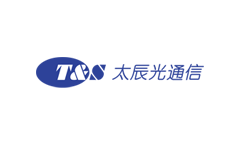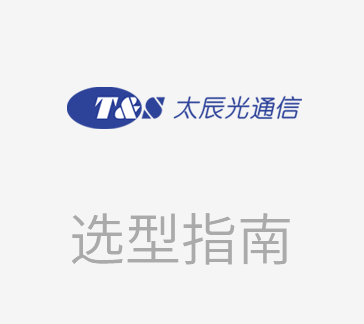800G Optical Transceivers and Standards




Anyone who works with data centers should not be surprised if data center IT spending exceeds $212 billion in 2022. These facilities, particularly the massive ones that process enormous amounts of data, are constantly looking for ways to protect their financial investments.
For some people, this entails implementing cutting-edge technology. And 800G Optical Transceivers are among the most cutting-edge technological advancements. What are the standards that go along with these transceivers, though, and what exactly are they?
We will address each of these queries here. You will have a much better understanding of what lies ahead.
800G Optical Transceivers
We must first discuss the specifics of 800G technology and how it relates to optical transceivers before we can move on. You can refer to our helpful guide here if you need a quick review of what an optical transceiver is. However, in essence, optical transceivers are data-sending and -receiving hardware components. How does this relate to 800G, the most recent technology that processes and transports quantities of data previously thought to be inconceivable?
These particular optical transceivers can take in eight billion bits per second. This is more than twice as many 400G optical transceivers, which were used in the previous generation.
The current 400G optical transceivers used by many data centers are more than adequate. In the end, 800G optical transceivers do represent this technology's future. Despite this, quite a few industry experts have already implemented 800G optical transceivers.
The majority of the thousands of new users are from North America. It doesn't specifically benefit any one industry.
Anyone needs high-capacity connectivity to the fullest extent possible instead. This technology has already been used by the best data centers. We can anticipate a completely new wave of users to emerge in the upcoming years.
800G Standards
The Ethernet Technology Consortium, also known as the ETC, was instrumental in the standardization of the 800G Optical Transceiver. The complete document is available here if you'd like to view these standards. Why standardize anything, you might ask?
Two factors are involved. First off, it makes it simpler to reuse technology from the previous generation.
Further down the road, it greatly reduces the cost of the technology. And that's fortunate, given how expensive 800G optical transceivers are right now. But that will undoubtedly change as time goes on.
The distance 800G optical transceivers can travel without sacrificing the quality of the transmitted data is one of their most impressive features. 800G optical transceivers are starting to be used in education, cloud service providers, research, and content providers.
When Will the Switchover from 400G to 800G Transceivers Take Place?
Internet usage has increased more than ever. As a result, there is an increasing need for technology that can keep up with the demands for bandwidth.
Most experts agree that 400G will remain the standard well into 2023, but it's unclear when we'll start to see 800G transceivers become the new standard in data centers around the world. However, most predict that by 2025, the number of 800G transceivers will start to increase.
The demand for more bandwidth and a sharp decline in the cost of the technology is likely to occur at the same time.
Cabling Solutions for 800G Network
It may be difficult to locate individuals who are knowledgeable about properly cabling an 800G optical network. The truth is that there is a severe lack of construction workers who are capable of setting up even the most basic optical network.
Finding one that can handle the most recent technological advancement will therefore be difficult. Finding a business that stays current with this kind of new technology is crucial, for this reason.
When it comes to CandC Technology, for instance, it can be of assistance. Designing and putting into place configurations that maximize data center efficiency is our area of expertise.
You can see that the new standard won't be established for 800G optical transceivers for a few more years. However, as demand grows, you can anticipate hearing a lot more about this technology in relation to data centers.
This is because, at the same distance, these transceivers have the potential to perform tasks that more than quadruple the capabilities of the available technology. These types of transceivers are now useful in some locations.
However, it will probably take another three to five years before they become incredibly commonplace. Remember that the technology is still accessible if you're interested in it. However, it'll probably require a sizable investment for your data center.
- |
- +1 赞 0
- 收藏
- 评论 0
本文由出山转载自T&S News,原文标题为:800G Optical Transceivers and Standards,本站所有转载文章系出于传递更多信息之目的,且明确注明来源,不希望被转载的媒体或个人可与我们联系,我们将立即进行删除处理。
相关推荐
Comparison of Advantages and Disadvantages Between 40G QSFP+SR4 Optical Module and QSFP+ AOC Active Optical Cable
Both 40G QSFP+SR4 optical transceivers and 40G QSFP+ AOC active optical cables are widely used in 40G data center for short-distance interconnection. Since both can realize short-distance interconnection, what is the difference between them and their advantages and disadvantages? Let‘s reveal the answer to everyone below.
What Are the Application Scenarios of Optical Transceivers?
The current high-speed optical transceiver application scenarios are mainly Internet data center networks, metropolitan area network optical transmission networks, and telecommunication networks represented by 5G bearer networks.
Optical Transceiver Interoperability and Compatibility
Numerous network deployments have utilized countless compatible fiber optic transceivers. However, when selecting optical transceivers, quality, interoperability, and compatibility remain big concerns for operators and project managers. In today‘s crowded OEM-compatible transceiver market, making an informed decision is crucial. Will the optical Transceivers I have bought work flawlessly with my different modules? Will the modules work with my switches and be compatible? You will learn about the optical transceivers‘ interoperability and compatibility from this article.
太辰光(T&S)光纤连接器选型指南
目录- 公司简介 Company profile 陶瓷插芯 Ceramic Ferrule 光纤连接器 Fiber Optic Cable Assembly 光纤元器件 Fiber Optic Components 波分复用器 WDM FBT光纤耦合器 FBT Coupler PLC分路器 PLC Splitter 光纤光栅 Fiber Bragg Grating 光纤模块、有源光缆及有源电缆 Fiber Optic Transceivers,AOC&DAC
型号- FOT-SC/APC,CG-XX/G652D/1.5M,D12F-SC/UPC/SM/∅0.9/L/L1M,SMC-P-1X2-163/15-10/90-FC/APC-1-G652D-∅3X60,FEN-SC-S4,FEN-SC-S5,MC-FC/APC-FC/UPC/SM/∅3/L,FEN-SC-S1,PM-FC/UPC(N)-FC/UPC(N)/1550/∅2/L-SA,FEN-SC-S2,FEN-SC-S3,ATIL-FC/APC/SM/05/NP/L,MPO/APC/12F-FC/UPC/SM/∅0.9-L/L1-RJ,PLC-1X8-A-09/L1-LC/UPC-09/L2-LC/UPC
Why Do 400G Optical Transceiver Prefer QSFP-DD?
Optical transceiver has developed to 400G optical transceiver, and manufacturers are stepping up research and development to seize the hot spot. Many mainstream manufacturers choose QSFP-DD as the package of 400 optical transceivers, but why do 400G optical transceivers prefer QSFP-DD? Does it mean that QSFP-DD will be the main package of 400G optical transceivers in the future?
TSSLS-CXXEE3C光纤收发器25Gb/s CWDM收发器,带诊断监控双工SFP28 10km收发器
描述- 本资料介绍了TSSLS-CXXEE3C光学收发器,这是一种25Gb/s CWDM收发器,适用于以太网/eCPRI/CPRI链路,支持高达10km的传输距离。该产品具有高灵敏度、低功耗、热插拔等特点,并符合SFF-8472标准。
型号- TSSLS-CXXEE3C
Firecomms Fiber Optics for Consumer Network Applications
Firecomms fiber optic solutions are ideal solutions for high-bandwidth triple play networks that require Ethernet data to be transmitted across the home network. Together with Plastic Optical Fiber (POF), Firecomms’ fiber optic transceivers enable quicker, more flexible and cost-effective installations — unique advantage for home builders, installers, content providers, and consumers alike.
TSSLS-DXXEE8光端机25Gb/s SFP28 DWDM单模收发器,带诊断监控双工SFP28 DWDM 10km收发器
描述- 本资料介绍了TSSLS-DXXEE8型25Gb/s SFP28 DWDMSingle-mode Transceiver,该产品适用于10km的G.652单模光纤,支持25GbE和CPRI 10。产品具有数字诊断功能,符合SFF-8431、SFF-8432、SFF-8690标准,并采用50GHz ITU C-Band DWDM Cooled EML激光器和APD光电二极管接收器。
型号- TSSLS-DXXEE8,TSSLS-DXXEE8C,TSSLS-DXXEE8T
What Are the 40G QSFQ+ Fiber Optical Transceivers and Their Differences?
40G networks are widely used in data centers. 40G fiber optical transceivers are the mainstream devices for interconnection between data center equipment. So what are the main types of 40G fiber optical transceivers? What are the differences between them?
Type Selection and Application of Fiber Transceiver
Although optical modules are a trend to replace fiber transceivers, there is still a relatively large user base for fiber transceivers. For example, fiber transceivers are still commonly used transmission products in monitoring systems.
Solutions for 40G QSFP+DAC/AOC Direct Connection Cable
Now, with the wide use of the 40G network, QSFP+ direct connection cable is also gradually popular. Now T&S introduces the common QSFP+ direct cable solutions in the market in detail through this article.
The Difference Between Fiber Patch Cord and Fiber Pigtail
Optical fiber patch cords are cables directly connected to desktop computers or devices to facilitate device connection and management. Patch cords have a thicker protective layer and are often used between terminal boxes and optical transceivers.
电子商城



































































































































































































登录 | 立即注册
提交评论